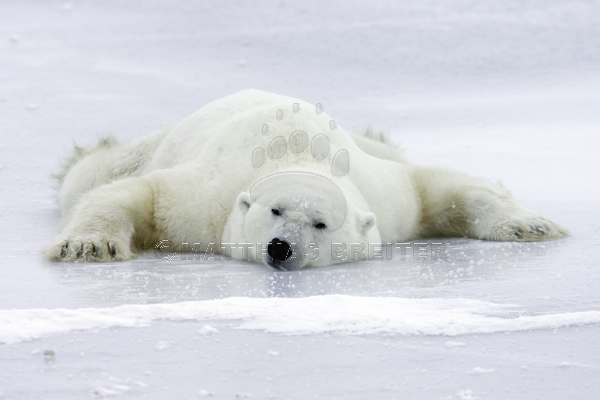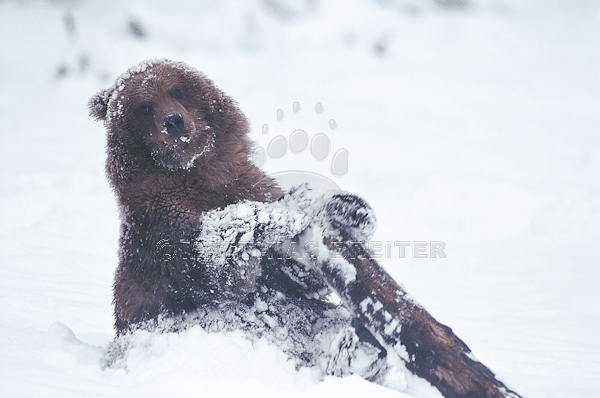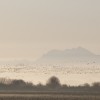Lily Azerad-Goldman of Bookpleasures.com
October 2011
Matthias Breiter, biologist, author and award-winner photographer par excellence, opens a mesmerizing window on the awesome beauty of a natural treasure that is the INSIDE PASSAGE which encompasses 40,000 miles of shoreline from north to south. This protected sea route is a jewel among the natural treasures of the world due to its scenic grandeur and the profusion of life along its shores. As well, it is one of the last frontiers of ecological beauty still left intact by man.
His dreamy and misty landscapes are suffused with a dazzling light. Dreamscapes and sunsets low on the horizon on the snowy mountains, the hills on the water shimmer.
Of course, this last frontier is still inhabited by wondrous sea life such as the humpback whales, orcas and dolphins, and shore animals and birds, bears, wolves, ducks and hummingbirds. Still birds and birds caught in flight, or eating their “lunch.” On page 199, he has taken an amazing picture of a rufous hummingbird resting during a rain storm on a flower stalk of cow parsnip. This is quite a feat as hummingbirds very seldom stay still in one place. He must have a very sophisticated shutter. Lugging such photographic equipment in the wilderness must have been a feat in itself!
From cover to cover there are many photo scenes filled with a great deal of depth and detail that caught my fancy including the Humback whale breaching near Juneau, Harris River, Prince of Wales Island, Tongass National Forest, Anan Creek in Flood where we see high river levels reduce the fishing success of bears, Misty Fjords National Monument that is also called “The Yosemite of the North, Peregrine falcons that are considered the fastest bird on earth and they can reach 200 miles per hour in a hunting dive, bald eagles swooping down to a spawned-out chum salmon along the Chikat River near Haines Alaska and the list goes on and on, far too many more to mention.
This intimate portrait of one of the most scenic and biological diverse regions on earth is divided into seven sections:
- Route to the North – Inside Passage
- In the shadow of Volcanoes
- In the grip of Tides
- The Great Bear Rainforest
- The Heart of the Tongass
- Between Two Capitals and
- The Journey’s End.
As well, Matthias Breiter gives us a historical synopsis on who were the inhabitants of these faraway temperate rainforests.
To produce this gem of a coffee table book, he had to take long stretches of time away from his family. He sure was forgiven for his absenteeism when they saw the results of his wanderings.
Matthias Breiter is to be commended on this colorful reminder that we still have ecological treasures North of Canada.
As he so aptly put it, The Inside Passage is more the sum of its features. Above all, it is a gift to all mankind. Let us hope that it will stay this way forever.
By Dr. Bojan Tunguz (Indiana, USA)
5.0 out of 5 stars Stunning Photography, September 13, 2011
Inside Passage is the seafaring route on that goes between the northwestern coast of North America and the outer Pacific islands. The passage has for over a century been used as the main commercial and cultural passageway that connects the continental United States with Alaska. This route came into prominence and got its name in the late nineteenth century as the Alaskan gold rush brought countless adventurers seeking fortune. Inside Passage extends from the Alaskan panhandle in the north to Washington State in the south. In recent times the term Inside Passage has come to denote not only the sea route, but also all of the adjacent islands and mainland areas. This is an enormous area of almost unspoiled natural beauty and has become one of the most desirable tourist destinations. Matthias Breiter’s book “Inside Passage” is a visually stunning coffee-table book that goes well beyond what one can expect from this genre. The photographs are incredibly crisp and beautiful and they do the justice to this astonishing area. Breiter also provides a lot of useful information about the Inside Passage, especially when it comes to the biodiversity of this region. The writing is inspiring and easy to read, with a lot of personal insights. The book’s landscape format is particularly suitable for, well, pictures of landscapes. Some of the inside spreads are among the most beautiful ones I have ever seen. This is a great book about a remarkable region. It will inspire wanderlust in all true nature lovers. Short of setting out on a trip to visit the Inside Passage though, this book is the closest that one can get to appreciating its otherworldly beauty.




